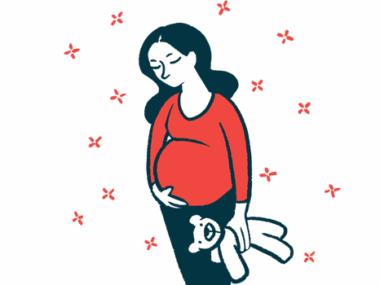Prompt diagnosis of postpartum aHUS can lead to better outcomes: Report
Prompt and accurate diagnosis is 'critical' for patients to start early treatment
Written by |

In cases of atypical hemolytic uremic syndrome (aHUS) that develop following pregnancy and childbirth, getting an early diagnosis is important for appropriate and timely treatment and better outcomes, a case report highlights.
“A prompt and accurate diagnosis is critical in these patients to initiate early treatment, which can significantly impact the overall outcome,” researchers wrote in the report “Postpartum Atypical Hemolytic Uremic Syndrome — A Diagnostic Conundrum Requiring Meticulous Management: A Case Report,” which was published in the Indian Journal of Critical Care Case Report.
aHUS belongs to a group of disorders called thrombotic microangiopathies (TMAs), which are characterized by red blood cell destruction (hemolysis), low platelet counts, and the formation of blood clots inside small blood vessels, which can injure the kidneys and other internal organs.
Up to 1 in 5 cases of aHUS are pregnancy-related
Up to one in five cases of aHUS occur during or just after pregnancy, but correctly identifying pregnancy-related aHUS can be challenging for clinicians.
Here, scientists in India described one such case of pregnancy-related aHUS. The report detailed the case of a woman in her late 20s who had just given birth to a healthy baby boy.
“During pregnancy and postpartum, the body undergoes significant changes to accommodate the growing fetus. However, these changes can also contribute to the development of various disorders,” the researchers wrote.
During the final weeks of her pregnancy, the woman had developed high blood pressure, and in the hours after giving birth, she experienced significant bleeding and two episodes of seizure-like events where she lost consciousness. She was put on medications to lower blood pressure and was given multiple transfusions of packed red blood cells, fresh frozen plasma, and platelets.
Her condition continued to worsen, however. Lab tests showed signs of anemia (low red blood cell counts) and kidney dysfunction, so she was referred to specialty care.
Upon arriving at the specialty clinic, the patient reported that her only noteworthy symptoms were fatigue and reduced urine output. She underwent more blood transfusions with plans to undergo dialysis — a type of treatment that can filter out waste products and remove excess fluid from the bloodstream that’s used when the kidneys stop working properly.
However, in the day after being admitted to the specialty center, she started experiencing severe breathing issues, which the researchers said was probably due to fluid building up in the lungs due to kidney failure. The patient was put on a ventilator to assist her breathing, and given furosemide, a medication that works to lessen fluid buildup.
Clinicians proposed several potential explanations for her symptoms, including preeclampsia or hemolysis, elevated liver enzymes, and low platelet count syndrome (known as HELLP); blood loss complications; clotting problems; kidney injury; or TMA.
This case describes an uncommon case of aHUS in a postpartum woman who had to be swiftly and accurately diagnosed amid the broad differential diagnosis and vague presentation.
Lab test results pointed to thrombotic microangiopathy
A series of lab tests ultimately pointed to a TMA as the most likely explanation.
“After ruling out systemic disorders, the attention shifts toward identifying the primary TMA syndrome(s) that are most likely and necessitate immediate treatment,” the researchers wrote.
Tests for infectious causes of TMA came back negative, narrowing the diagnosis to one of two possibilities: aHUS, or another TMA called thrombotic thrombocytopenic purpura, which is characterized by the low activity of an enzyme called ADAMTS13.
Further tests showed ADAMTS13 activity was near or within a normal range, ultimately allowing clinicians to confirm the diagnosis of aHUS. The researchers noted this type of testing is crucial to make the proper diagnosis and ensure that patients can receive the right kind of treatment.
“By integrating the ADAMTS13 activity test results and carefully excluding alternative causes, appropriate treatment decisions can be made to effectively address the underlying condition,” they wrote.
Over the course of her hospital stay, the patient received transfusions totaling 16 pints of fresh frozen plasma and four pints of packed red blood cells, along with eight sessions of dialysis in less than two weeks. The approved aHUS treatment Soliris (eculizumab) was not given due to financial constraints.
Patient underwent close monitoring, repeated hemodialysis, transfusions
“The patient was able to achieve a near-normal state of health within weeks through close monitoring, repeated hemodialysis, and [transfusions of packed red blood cells and fresh frozen plasma]. This underscores the importance of timely transfusion in treating such cases and questions the use of other available treatment options considering the cost-benefit ratio,” the researchers wrote.
After several rounds of transfusions and dialysis, her condition started to improve, and on her 11th day in the hospital she was removed from the ventilator. Subsequent tests showed no signs of further hemolysis, and the patient was ultimately able to be discharged from the hospital.
She remained on a regimen of blood pressure lowering medications, as well as supplements of iron, folic acid, and vitamin B12, and was advised to attend a follow-up appointment a month later. She followed up regularly and adhered to the treatment after being discharged. Her symptoms had eased and subsequent tests showed her abnormal blood work values had normalized.
“This case describes an uncommon case of aHUS in a postpartum woman who had to be swiftly and accurately diagnosed amid the broad differential diagnosis and vague presentation. Hence, this case report helps us derive, for example, one of the scenarios when an eye must be kept out for such an uncommon diagnosis,” the researchers wrote.







